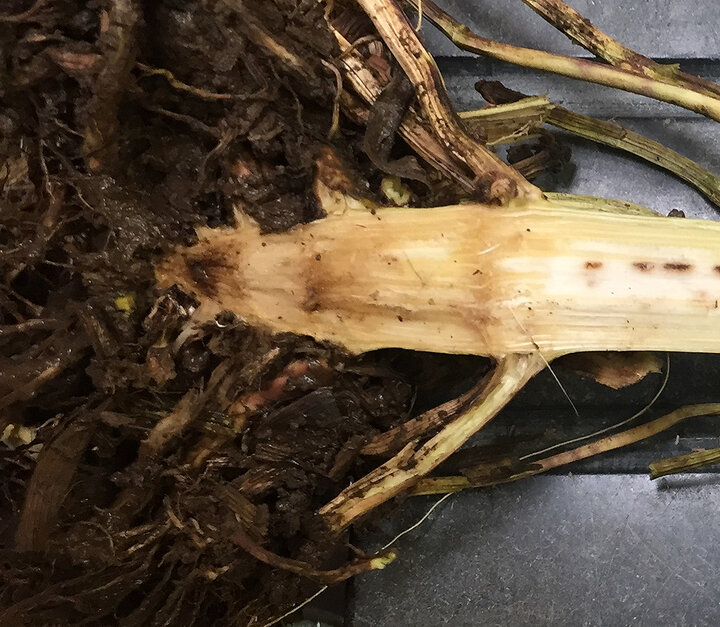As you continue to scout fields late in the season, it is important to collect the right kind of sample to ensure proper diagnosis. Over the course of several days, the leaves can become necrotic with symptoms resembling sunscald (Figure 1). However splitting the stalk and crown can reveal the real cause of leaf dieback (Figures 2 and 3). Certain stalk rots, such as Anthracnose are managed through resistant varieties. Others, like Fusarium spp., are controlled through cultural practices that lessen plant stress — balanced fertility, proper planting populations and insect control.
Even though the noticeable symptoms appear on the leaves, the pathogen is not present in the leaves. Additionally, it may be easier to cut the plant a few inches above ground level and leave the crown and roots, but the main difference between crown and stalk rots is where the pathogen infected. If the crown and roots are left and the disease has not progressed up the stalk, it is difficult to get an accurate diagnosis. Bringing in entire plants is the best way to get an accurate diagnosis. Proper management starts with a proper diagnosis.
Please do not send dead plants. It is difficult to identify the exact cause of death on a plant once other opportunistic pathogens have had a chance to infect the weakened plant. Ideal samples are ones that are just starting to show symptoms. Keeping soil on the root ball is helpful in keeping the plant alive a little longer as we work through our diagnosis. Please enclose the root ball in a separate plastic bag to prevent soil from spreading to the rest of the plant. In order to fit the entire plant into a bag or shipping container, it is fine to cut or bend them to fit into a trash bag or large zip lock bag.
More information regarding sample submission can be found here.
As always, please fill out the sample ID form with as much information as possible.




